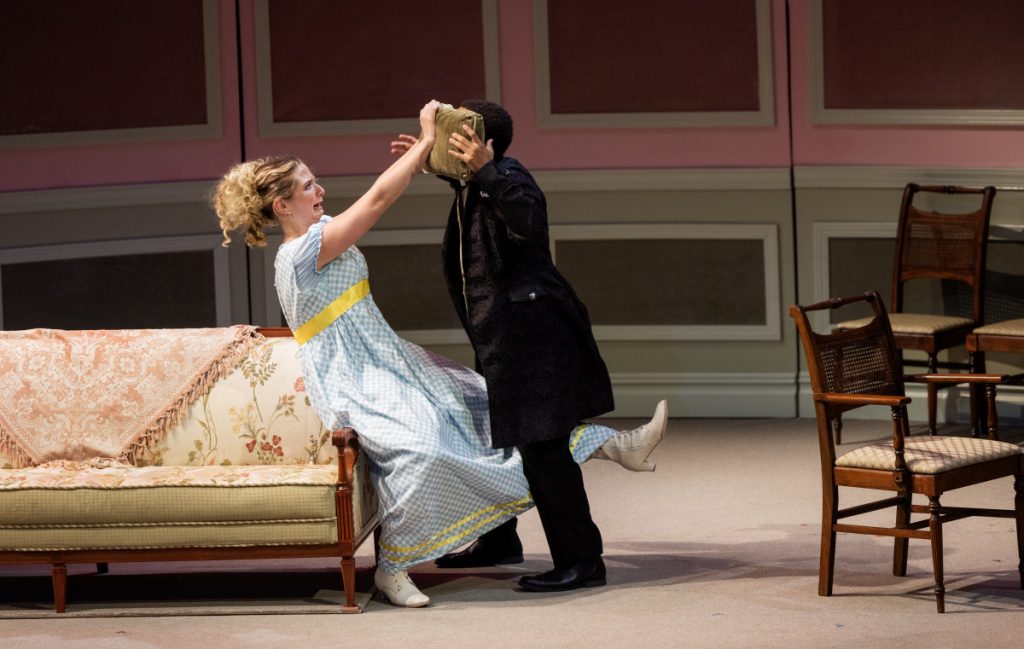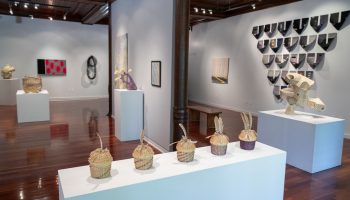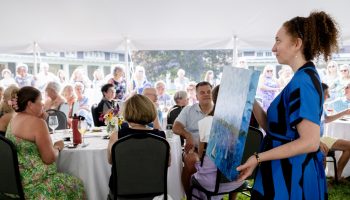
Julia Weber
Staff writer
For Katie Rose McLaughlin, choreography extends far beyond dance. To her, it’s about movement, body language and storytelling.
The Pride and Prejudice choreographer was raised in formal ballet training, and she eventually shifted toward modern dance, later following physical theater and clown school. The combination of these movement practices landed her in her current position as a choreographer.
Choreography as a practice is probably best known for complex and complicated group dance numbers, but it encompasses body language at every level – even down to the details.
While Chautauqua Theater Company’s production of Kate Hamill’s Pride and Prejudice features formalized choreographed dances in line with the balls popular during the time period, McLaughlin is also charged with choreographing much smaller details that typically fly under the radar.
For instance, McLaughlin worked with actors on their posture in order to use body language as a way of distinguishing upper class characters from those in the working class. These body cues, though seemingly small, help audience members understand the context of the play in subtler ways, which can be seen as CTC continues its run at 2:30 and 7:30 p.m. today in Bratton Theater.
McLaughlin said her work aims to elevate the natural movement of the actors.
“Something that’s really important to me is how can we use (the performers’) natural way of moving?” she said. “How can we use them and the history that their body holds to tell the story?”
She was also drawn to Hamill’s adaptation of Pride and Prejudice because of the way that it approaches gender and stereotypes, particularly as they relate to marriage and relationships.
During the time period in which the story takes place, dances were a way for unmarried men and women to find suitors. McLaughlin, for this production, was able to take these dances and use them to tell a more modern story while still in line with the historical period.
For McLaughlin, part of the appeal of Hamill’s adaptation is its accessibility for a modern audience to help resonate and connect more deeply, approaching the themes of the play through a contemporary lens.
“It is a true fulfillment of this desire that I’ve had, which is creating a connection with audiences and with a nod to accessibility and making sure that we’re inviting them into the story and that the story is clear,” she said.
McLaughlin said the collaborative aspect of choreography in shows is incredibly crucial. Through dialogue and trial and error with the actors and Producing Artistic Director Jade King Caroll, as well as other crew members like the sound and lighting designers, everyone can bounce ideas off of one another to find the best fit for a scene.
“It’s basically like the idea of building a playground,” she said. “We have the actors, we know we want them to play, but how do they play? Is this scene the monkey bars? Is this scene a swing?”
Contributions from each member of the company mold the production into its final form from that feedback, she said.
“What does that mean both physically and in terms of the acting of it all, to have that feeling of swinging, of momentum going back and forth, of energy going back and forth? Through repeating the scene, talking, playing with ideas, it always emerges,” she said.
McLaughlin’s priority when choreographing performances is to center the individuals who are performing and highlight their abilities and talents.
“It’s important to me as a human that we honor the humans onstage that are telling our stories, that they’re able to bring themselves and their unique skill sets to the table,” she said.




